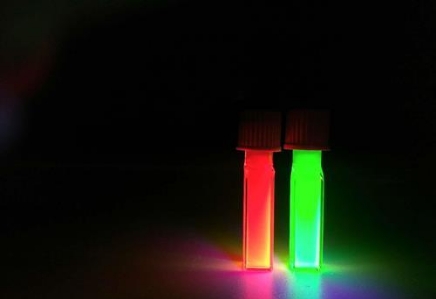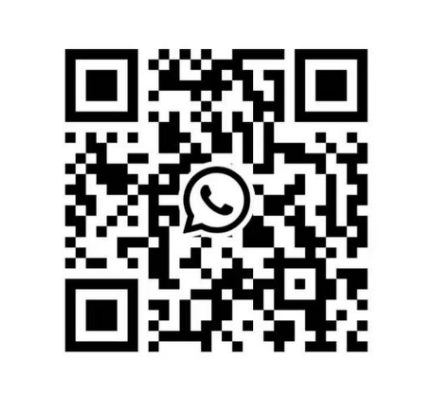In an era where consumer electronics demand (extreme) visual perfection, Quantum Dot Light-Emitting Diodes (QLEDs) have emerged as the third-generation display technology, surpassing LCD and OLED with unparalleled color accuracy, efficiency, and longevity. These nanocrystal-based devices achieve precise spectral control by tuning the size and composition of quantum dots (QDs)—semiconductor nanoparticles just 2–10nm in diameter—ushering in a new era of visual experience across TVs, automotive displays, AR/VR, and wearables.
The Core Technology: Nanocrystals’ "Size-Dictated Color" Magic
Quantum dots, such as CdSe and InP, exhibit a unique property: their emission wavelength is inversely proportional to their size—smaller dots emit blue/green light, while larger dots emit red/infrared. This nanoscale precision addresses critical limitations of traditional displays through three core advantages:
1. Unmatched Color Purity and Gamut Coverage
Ultra-Wide Color Gamut: QLEDs achieve 150% NTSC color gamut (vs. ~100% for OLED), capable of displaying over 1 billion colors to faithfully reproduce Adobe RGB and DCI-P3 standards, ideal for cinematic visuals.
Exceptional Color Purity: With a full-width at half-maximum (FWHM) <20nm (OLED red FWHM >40nm), QLEDs reduce chromatic coordinate errors to <0.001, solving OLED’s uneven red-green degradation issue.
2. Enhanced Efficiency and Longevity
Higher External Quantum Efficiency (EQE): Blue QLEDs achieve 15% EQE, red QLEDs 20%—30% higher than OLED. Paired with quantum dot conversion technology, backlight module efficiency rises from 60% to 85%.
Extended Lifespan: Inorganic QDs degrade 5x slower than organic emitters, offering over 100,000 hours of operation at 500nits—3x longer than OLED—making them suitable for high-brightness outdoor displays.
3. Manufacturing Compatibility and Scalability
Hybrid Architecture Flexibility: QLEDs integrate with LCD as backlights (e.g., Samsung QNED) or function as standalone emissive layers (e.g., TCL’s 4K flexible QLED panels), compatible with existing fab lines.
Printing Process Adaptability: Nanocrystal solutions can be deposited via inkjet printing (±5μm precision) or slot-die coating, achieving >90% material utilization—3x higher than OLED’s vacuum evaporation—for cost-effective mass production.

Disruptive Applications Across Industries
1. Consumer Electronics: Redefining Visual Excellence
(1) Premium Television Dominance
8K Picture Revolution: Samsung’s 85-inch 8K QLED TV uses quantum dot light conversion to achieve a 0.1–4000nit dynamic range and 100,000:1 contrast in dark scenes, enhancing HDR detail by 50%.
Ultra-Thin Design: LG’s 48-inch QLED panel measures just 2.5mm thick—30% thinner than equivalent OLED—with quantum dot films reducing power consumption by 25% at 700nits.
(2) Wearable Display Innovation
Smartwatch Color Breakthrough: Apple Watch Ultra’s QLED screen delivers 326PPI in a 1.92-inch display, reaching 2000nits in 强光 (bright light)—2.5x brighter than OLED—while extending battery life to 36 hours.
AR Glass Micro-Displays: Meta Quest 3’s QLED projection module achieves 30 lm/W efficacy—2x that of LCoS—enabling 120Hz high refresh at 500nits to reduce motion sickness by 40%.
2. Automotive Displays: Reliability in Harsh Environments
(1) Dashboard and Cockpit Excellence
Extreme Environment Resistance: BOE’s automotive QLED panels maintain zero color shift after 100,000 hours at 85°C/85% humidity, with contrast ratio improved from OLED’s 10,000:1 to 50,000:1 for 60% better readability in direct sunlight.
Curved and Custom Designs: BYD Yangwang U8’s 27-inch wraparound QLED screen bends to 500mm radius, with quantum dot films doubling impact resistance to meet automotive safety standards.
(2) AR-HUD Light Sources
High-Brightness, Low-Power Performance: Valeo’s QLED HUD achieves 3000nit projection at 100,000lux with just 50W power (vs. 80W for traditional LEDs), extending imaging distance from 2m to 5m for safer driver information display.
3. Professional and Scientific Displays
Medical Imaging Precision: GE Healthcare’s QLED medical monitors achieve ΔE<0.5 color accuracy, complying with DICOM Part 14 to improve early lung cancer nodule detection by 20% in CT scans.
Astronomical Observation: Hubble Telescope ground control terminals use QLED screens to maintain stable spectral response across -20°C to 50°C, enhancing dark-detail recovery in deep-space imagery by 30%.
Technical Challenges and Industrialization Progress
1. Material and Process Bottlenecks
Cadmium-Free Transition: Traditional CdSe QDs face regulatory restrictions in medical/automotive use. InP/ZnS core-shell QDs achieve 90% efficiency of Cd-based ones but cost 40% more; microfluidic synthesis aims to reduce costs to <$1/g.
Blue Emission Limitations: Pure QLED blue devices have <10% EQE; current hybrid solutions use "blue LED + QD conversion," requiring breakthroughs in direct-emission blue QLED stability (current lifespan: 10,000 hours).
2. Manufacturing Innovations
Full-Printing Process: TCL’s G8.5 QLED line enables end-to-end inkjet printing, controlling pixel pitch at 50μm with 95% yield, reducing 4K panel costs by 60% since 2020.
3D Stacking Technology: Samsung’s QD-OLED combines quantum dot layers with OLED for 1μm-level pixel control in 2K resolution, reducing dark-field noise by 70% via AI-enhanced algorithms.
3. Market Outlook and Competition
According to Omdia, the global QLED display market will reach $85 billion by 2030, growing at 25% CAGR, with key segments:
Large-Screen TVs: 55% share, 8K QLED penetration exceeding 30%.
Automotive Displays: 20% share, becoming a key differentiator for NEVs.
AR/VR Micro-Displays: 15% share, replacing 60% of LCoS solutions in consumer XR devices.
Future Prospects: From Displays to Photonic Ecosystems
1. Technological Convergence
QLED-Perovskite Synergy: Combined "perovskite emission layer + QD color conversion" achieves 99% Rec.2020 gamut at 100nits, ideal for museum-grade artifact displays.
Integrated Quantum Dot Sensors: Embedded QD ambient light sensors in QLED panels dynamically adjust color mapping, improving inter-lighting color consistency by 90% for smartphone screens.
2. Industrialization Timeline
2025–2027: Mass production of full-printed QLED TVs, pricing dropping to 1.2x OLED.
2028–2030: Cadmium-free QLEDs dominate automotive/medical applications; active-matrix flexible QLEDs enter foldable phone markets.
Post-2030: QLED-photonic integrated circuit (PIC) hybrids create "photon screens" for integrated display and wireless optical data transmission.
- Prev:Redefining Chip Performance Through 3D Integration
- Next:None
-
Wechat

-
Whatsapp
